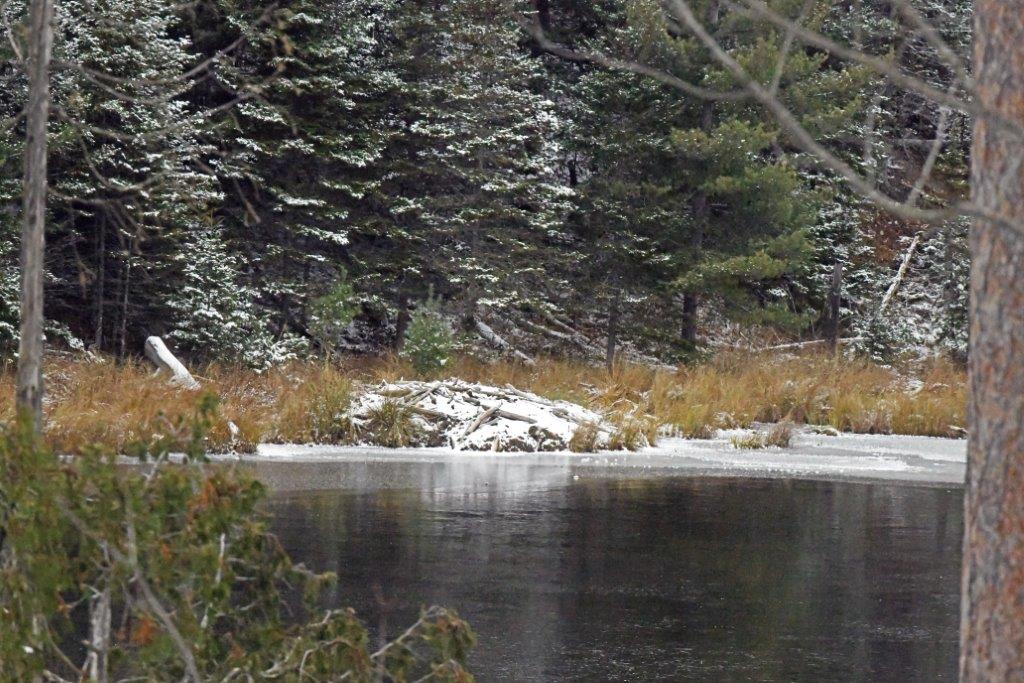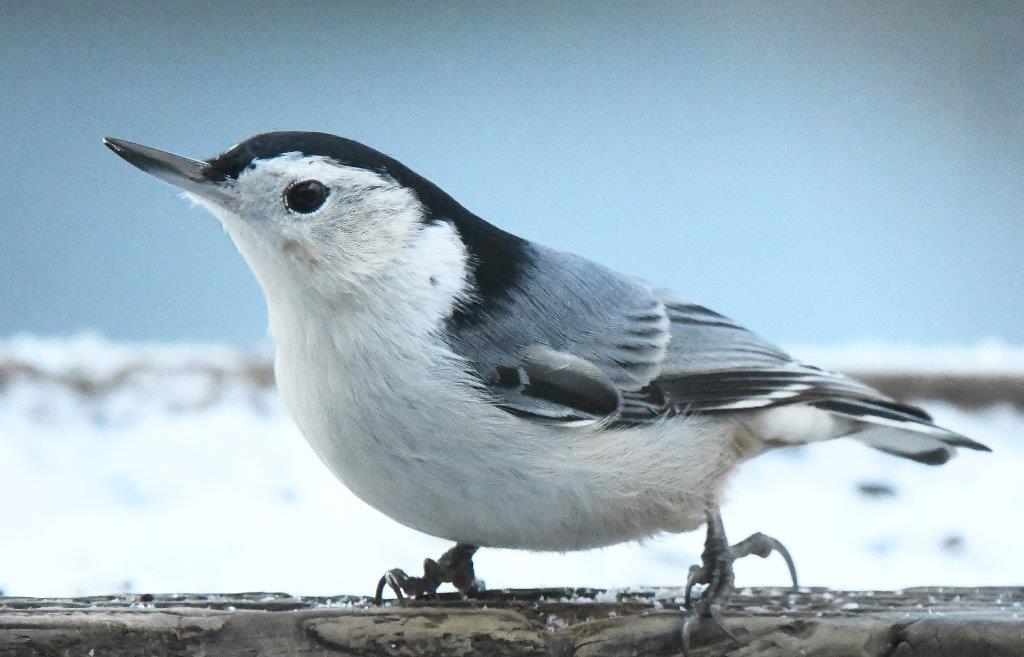Settling in for Winter - UPDATE November 1, 2023
Mature Buck

Young bucks
Young bucks

Young bucks
Young bucks

Now with freezing temperatures and snow arriving, winter is beginning with Lucky and Holly seeming to agree that the den has room for both.
Here at the Wildlife Research Institute, 3-year-old Fletcher apparently called it a year when he left here at 9:30 PM on October 28 on the first day with snow.
Woods Lake
Woods lake

With ice forming around the shore of Woods Lake, a mink checked the bear scale for food on October 29 weighing in at two pounds, which would make it a young one or a female.
On October 30th, the red fox showed us what he does when he is not coming for the food we offer. He hunts. As we watched, he sat perfectly still at times—ears forward listening and looking and sometimes making unsuccessful pursuits and pounces in unsuccessful attempts to catch prey we never could see well enough to identify in the dense brush that let the prey move more freely than the fox.
Red fox
Red fox

Mink
Mink

As the snow accumulated yesterday (the 31st), a white-breasted nuthatch posed in front of the snowy background to be the poster bird for the occasion.
Today, rusty blackbirds were heading south with one coming close enough for a picture. It was a female as shown by her rusty crown, light eyebrow patch, and bright yellow eye.
White breasted nuthatch male
White breasted nuthatch male

Rusty blackbird female
Rusty blackbird female

Today, Woods Lake is totally covered by ice but not enough to walk on.
For white-tailed deer, mating season is said to last from November into early December, putting these young bucks right on schedule as they show their testosterone by butting their heads together and pushing back and forth. A few hours later, a mature buck showed up vocalizing and looking ready for action with his antlers nicely polished—only to find no sparring partner or mate available.
As I once heard someone eloquently say, “It’s getting intrestinger and intrestinger.” (although for us, nothing can beat bears).
Thank you for all you do,
Lynn Rogers, Biologist, Wildlife Research Institute and

 Author
Topic: Jewel and her cubs (Read 2344700 times)
Author
Topic: Jewel and her cubs (Read 2344700 times)
